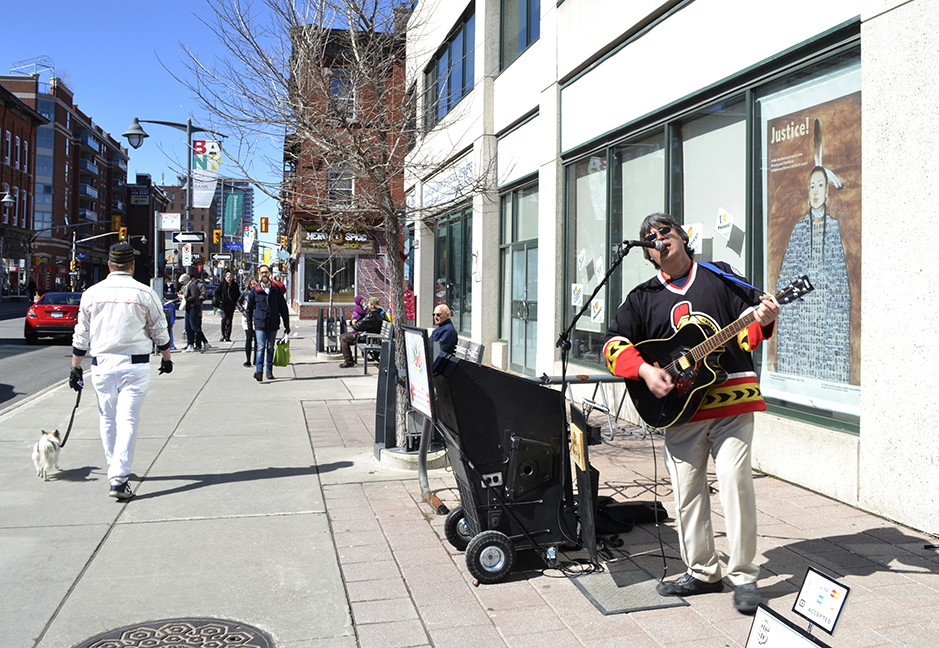Plan aims to brand Ottawa ‘music city’
By Meaghan Richens
A plan to “brand” Ottawa as a music city — think Nashville or Austin, Texas — was outlined Feb. 10 as the highly anticipated Ottawa Music Strategy was unveiled at a celebration of local performers at the National Arts Centre.
The strategy was announced last year and later incorporated in the 2018 draft budget, when Mayor Jim Watson promised the city would allocate $100,000 to the develop the plan. The city worked with the Ottawa Music Industry Coalition to construct a strategy aimed at identifying Ottawa as a North American music hub.
The vision would leverage Ottawa’s status as a capital city to help build its reputation as a music centre.
Other goals showcased in the event included music education, diverse media outlets and the city’s night life economy.
Robin Moir, secretary treasurer of Canadian Federation of Musicians in Ottawa (Local 180) is part of the strategy’s 15-person task force.
Moir said she came into the task force convinced that Ottawa already has a music brand, and she was inspired to be a part of helping that continue.
“We’ve been in business as a union since 1902, and so we’ve always been working with musicians,” said Moir.
“But I really believed, based on our past and the Paul Ankas and the Alanis Morissettes and Bruce Cockburns and everything like that, that Ottawa had a great foundation to actually move forward, twenty, thirty years,” said Moir, spotlighting a few of the musical legends with roots in the capital.
Jesse Stewart, a percussionist and associate professor of music in Carleton University’s School for Studies in Art and Culture, is also a member of the task force.
A big focus for members of the task force was music education, said Stewart.
“I teach music at Carleton University and I’m a big believer in the power of music to transform lives and to transform communities,” said Stewart.
The results of a public survey seeking input to help guide the music strategy were also made public at the event.
More than 1,100 people responded to the survey, with a completion rate of 87 per cent.
“I’ve been told that is one of the highest completion rates for a city survey so far,” said Nik Ives-Allison, general manager of OMIC. “That shows that there’s a tremendous amount of interest in the community in both the music strategy and the music industry itself.”
Of those respondents, 38 per cent were artists, 38 per cent were music fans, 11 per cent were other music industry professionals, 10 per cent identified as “other” and 3 per cent were educators.
Notably, 87 per cent of music fans know at least one person who works in Ottawa’s music industry, but only 24 per cent felt it was possible to make a viable living in the business in this city.
In response to a question about how Ottawa can have the most significant positive impact on the music community, 27 per cent of respondents said the best path forward would be to invest in building Ottawa’s identity as a music city and as a music-tourism destination. About 20 per cent said the priority should be on reducing red tape, changing bylaws and regulations to create a more music-friendly environment.
“There were two main goals for that survey,” said Andrew Vincent, the lead consultant developing the strategy on OMIC’s behalf.
“One was to make sure that the recommendations were generally in alignment with a bigger group of people and, secondly, to provide some metrics for gauging the success of the strategy over three years,” said Vincent.
The final version of the strategy will be presented to city council in April.
“Speaking generally about the strategy and the recommendations, I’m really excited about what we’ve got here in terms of a foundation for seeing the realization of the strategy over the next say decade,” said Vincent.
“In terms of the vision process, we were talking about what would Ottawa look like in 2030 if we’re successful? And so this is a three-year strategy. This is basically the first 25 per cent of that time, and I think its big goal really is to create the foundation for that future growth. So at the end of three years we’ll be able to look back and say, ‘What was working?’” said Vincent.
The event was held in conjunction with launch event for the Sonicity app. The app, developed by local media arts group artengine, pairs an OC Transpo bus route with a specially commissioned piece of music composed by an Ottawa musician.
The event included musical performances from artists featured on the app, including Boyhood, Nathanael Larochette, Ben Globerman and Adam Saikaley, as well as a “Sound Installation” by Philippe Charbonneau.
The evening also featured a silent disco night ride simulating the app experience.
Produced in collaboration with Artsfile.

